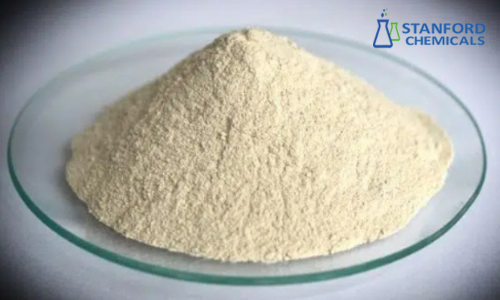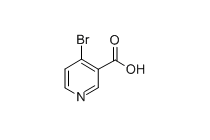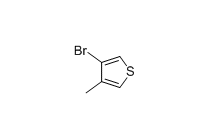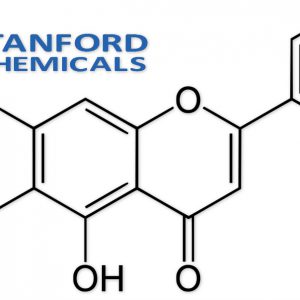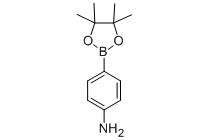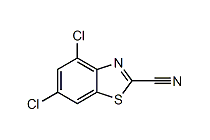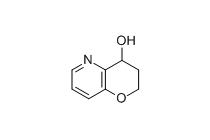- Home
- Industrial & Lab Chemicals
- CA6923 Desulfurization Gypsum Powder
CA6923 Desulfurization Gypsum Powder
| Parameter | Value |
| Appearance | White or light yellow powdery crystals |
| Composition | CaSO₄·2H₂O |
Stanford Chemicals Company (SCC), a company specializing in the research and production of advanced materials, guarantees that each of its products reaches international leading standards through meticulous craftsmanship and strict quality control. Desulfurization Gypsum (chemical formula CaSO₄·2H₂O), also termed FGD Gypsum, is a synthetic calcium sulfate dihydrate byproduct generated from flue gas desulfurization processes in coal-fired power plants, exhibiting compositional similarity to natural gypsum but with controlled trace impurities.
Related Products: Sodium Citrate Dihydrate, Calcium Sulfate Dihydrate Powder, Calcium Citrate Anhydrous Powder
- Description
Description
Desulfurization Gypsum Description
Desulfurization gypsum, a byproduct of flue gas desulfurization processes, consists predominantly of calcium sulfate dihydrate (CaSO₄·2H₂O, ≥85%). While chemically similar to natural gypsum, it possesses distinct physical characteristics due to its synthetic origin. The material typically appears as a fine, white powder with excellent uniformity (particle size 10-150 μm) and high brightness (L* >92).
Key Characteristics:
-
Crystal structure: Monoclinic system (space group C2/c)
-
Moisture content: ≤15% free water; 20.9% stoichiometric crystalline water
-
Solubility: 0.24 g/100mL at 20°C (exhibiting retrograde solubility)
-
Thermal behavior:
-
Free moisture evaporation below 80°C
-
Crystalline water release peaking at 145°C
-
Conversion to hemihydrate at 100-120°C
-
Complete dehydration above 160°C
-
Impurity Profile:
-
Trace components:
-
Calcium sulfite hemihydrate (≤0.5%)
-
Chloride (≤600 mg/kg)
-
Water-soluble MgO (≤0.1%) and Na₂O (≤0.06%)
-
-
Radiation safety: <1 Bq/g ²²⁶Ra
Desulfurization Gypsum Specifications
Properties
| Property | Value |
| Appearance | White or light yellow powdery crystals |
| pH | 5.0-9.0 |
| Free Moisture Content | ≤15% |
| Calcium Sulfate Dihydrate (CaSO₄·2H₂O) | ≥85% |
| Chloride Ion (Cl⁻) | ≤600 or as per contract agreement mg/kg |
| Calcium Sulfite Hemihydrate (CaSO₃·½H₂O) | ≤0.5% |
| Water-Soluble Magnesium Oxide (MgO) | ≤0.1% |
| Water-Soluble Sodium Oxide (Na₂O) | ≤0.06% |
*The above product information is based on theoretical data. For specific requirements and detailed inquiries, please contact us.
Desulfurization Gypsum Applications
Industrial Applications
Desulfurization gypsum has become an important sustainable material across multiple sectors:
Construction Materials:
-
Primary raw material for gypsum plasterboards and drywall
-
Base component for self-leveling floor compounds
-
Cement set regulator (4-5% dosage) controlling C₃A hydration
Agricultural Uses:
-
Effective soil amendment for sodic clay soils
-
Provides both calcium (15-18% CaO) and sulfur (≥16% SO₃)
-
Maintains neutral pH impact
Specialty Applications:
-
Raw material for sulfuric acid production (thermal decomposition >900°C)
-
Functional filler in polypropylene/polyethylene composites
-
Coagulant aid in wastewater phosphate removal
Quality Compliance:
Meets stringent industry standards including:
-
ASTM C471/C472 for building materials
-
FDA 21 CFR §184.1230 for agricultural use
-
European EN 13279-1 for construction applications
Desulfurization Gypsum Packaging
Our products are packaged in customized cartons of various sizes based on the material dimensions. Small items are securely packed in PP boxes, while larger items are placed in custom wooden crates. We ensure strict adherence to packaging customization and the use of appropriate cushioning materials to provide optimal protection during transportation.
Packaging: Carton, Wooden Box, or Customized.
Desulfurization Gypsum FAQs
Q1. How does the impurity profile differ from that of natural gypsum in high-performance applications?
FGD gypsum contains less crystalline silica (typically ≤0.5% compared to 1–8% in natural gypsum) and less heavy metal content due to controlled synthesis but contains traces of calcium sulfite hemihydrate (≤0.5%) and soluble alkalis (Na₂O ≤0.06%, MgO ≤0.1%), which can accelerate the setting time in cement blends by 8–12% compared to natural gypsum.
Q2. What is the maximum storage temperature to prevent phase transformation?
Extended heat above 65°C induces dehydration to β-hemihydrate, altering hydration kinetics. Storage conditions must provide temperatures ≤50°C and relative humidity ≤70% in order to maintain dihydrate crystallinity. Thermal stability is sulfite content dependent—each 0.1% CaSO₃·½H₂O decreases the dehydration onset temperature approximately 3°C.
Q3. What is the impact of water-soluble alkalis on the durability of calcined products?
Soluble Na₂O >0.04% causes efflorescence in set plasters by sodium sulfate migration. MgO >0.08% reduces efficiency of hemihydrate conversion by 5–7% at calcination due to the formation of magnesium silicate. Combustion analysis must test for alkali content before processing.

